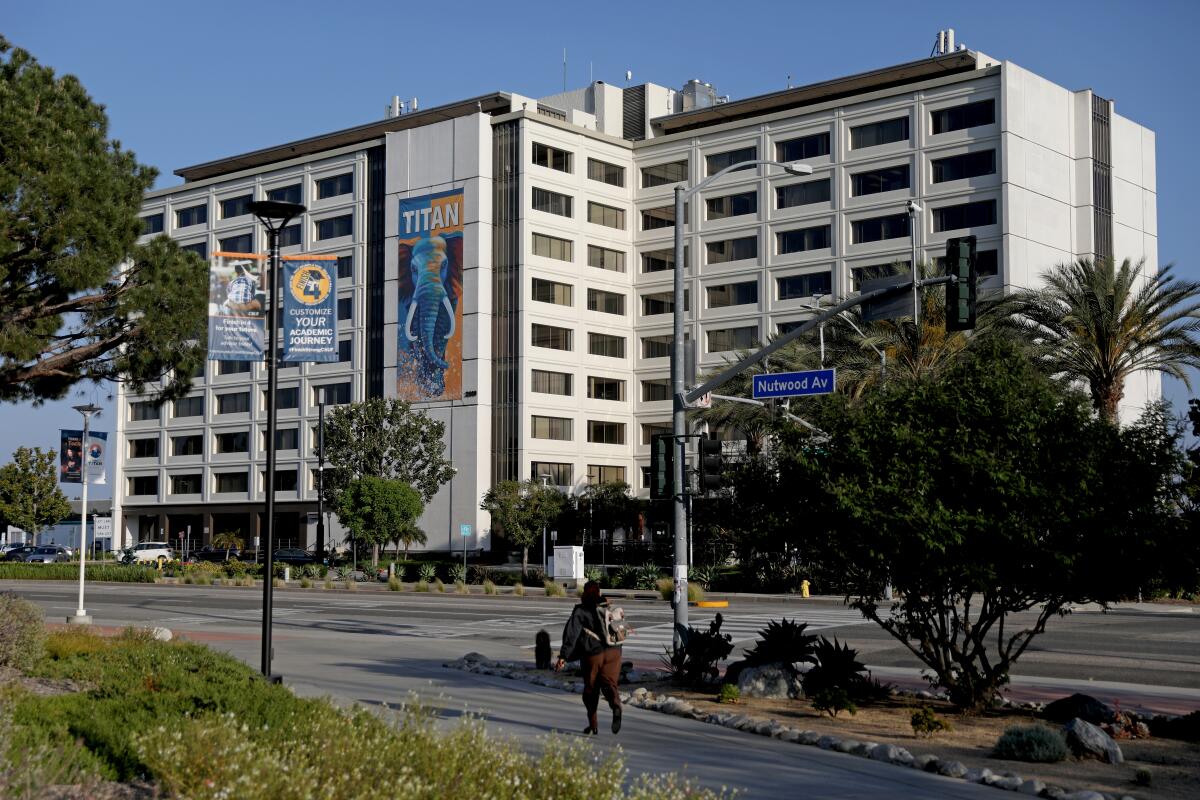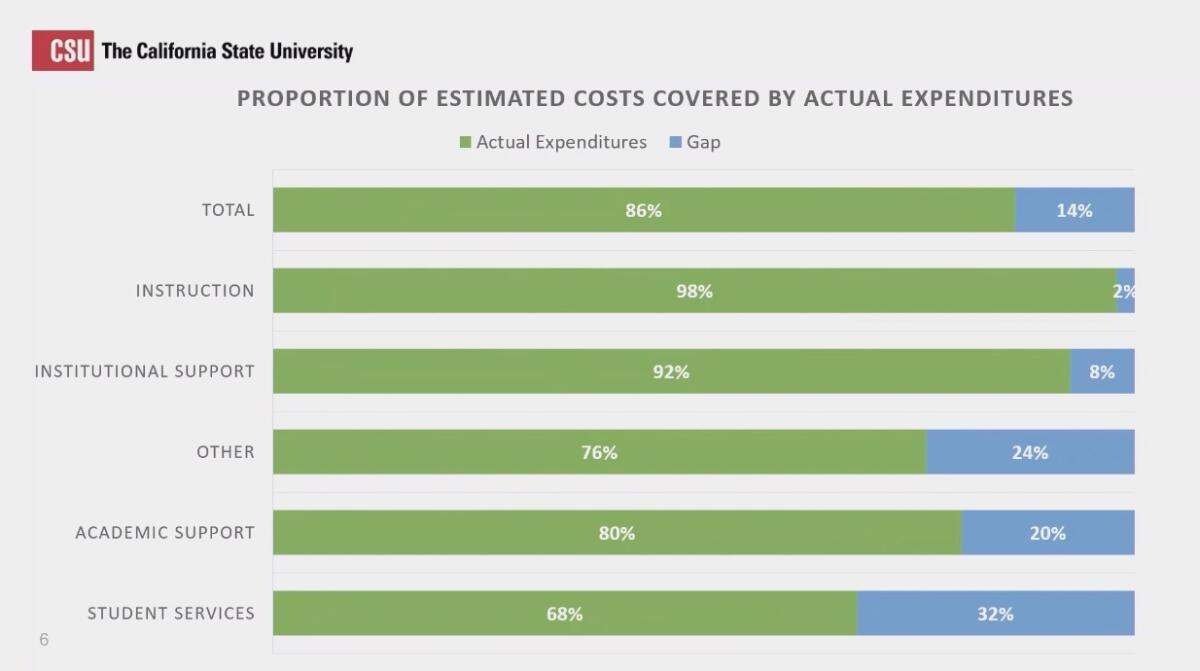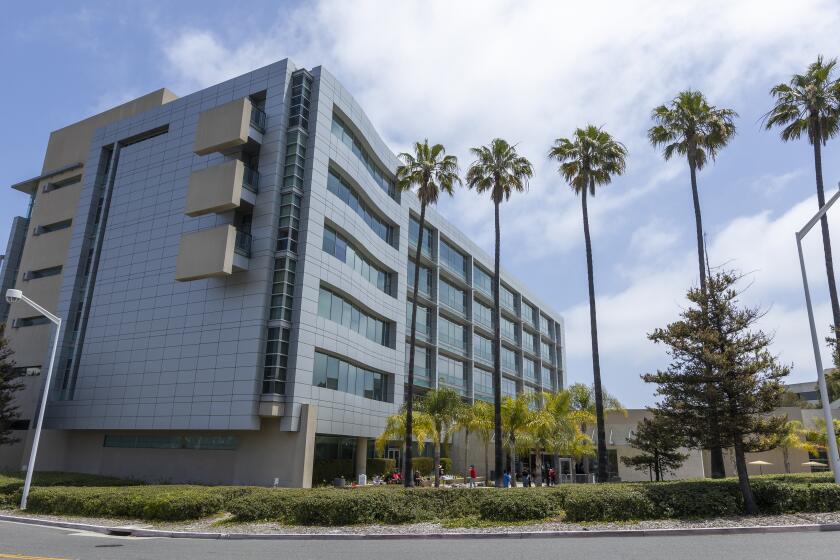Cal State faces budget gap of $1.5 billion; report recommends tuition hikes

- Share via
A new report reviewing California State University’s finances found the system is paying only about 85% of what it actually costs to meet student, staff and institution needs, creating a funding gap of almost $1.5 billion.
The months-long review found a 14% disparity between what Cal State spent in its 2021-2022 year and what it actually costs to educate its students, pay faculty and staff salaries and keep its vast 23-campus network running, according to an almost 70-page report released this week. The gap means staffing positions remain vacant and maintenance projects get deferred.
To begin to address the shortcomings — which are only expected to rise in coming years — the report recommended tuition hikes, though the exact amount and timing has yet to be decided.
“We were trying to understand what it costs to do what we need to do,” said Julia Lopez, a CSU Board of Trustees member who helped lead the sustainable financial team that worked on the report. “We have a big gap. ... The costs of operating the CSU is much higher than the revenues we’re likely to have, or that we will realistically have in the coming years.”
A report found flaws in the Cal State system’s data collection on sexual harassment and sexual misconduct cases and cited wide distrust by students and employees.
Lopez recommended that any increases to tuition be “modest, gradual, [and] predictable,” and accompanied by improvements to the university’s financial aid policy.
The report evaluated two potential plans for tuition hikes: one that would implement 3% annual increases for every student until graduating, and another would implement a one-time 5% increase to incoming students. The review found that those increases could boost revenue by 16% to 24% by 2030, Lopez said at a Board of Trustees financial committee meeting this week.
“It can be a significant bump with a modest increase,” Lopez said. The board plans to continue working on tuition hike proposals, with possibility of a final decision by the fall.
Cal State Student Assn. President Krishan Malhotra, who assisted on the work group’s financial report, said his organization wasn’t ready to take a position on any of the proposed tuition hikes. But he said he is hopeful any plan that is adopted is “student-centered” and takes into consideration the effects that additional costs could have on students and enrollment.
Lt. Gov. Eleni Kounalakis agreed, calling for an analysis of the financial strength of the student body before tuition is raised.
Here’s what you need to know about Gov. Gavin Newsom’s plan to offset California’s $31.5-billion budget deficit.
“Most of our students are struggling to make ends meet,” Kounalakis said. “Most of them need more financial aid.”
But Lopez said those concerns are top of mind, and pointed out that increases in revenue also increase funds available for financial aid — and that the majority of CSU students benefit from such support. She also said that raising tuition is the most effective way to improve CSU’s economic outlook.
“We really are at the mercy of California’s very volatile economy,” Lopez said. “If the economy gets a cold, the general fund will get pneumonia and then we’re at the mercy of that. Tuition, on the other hand, is stable — it’s predictable revenue for us.”

The report identified CSU’s largest financial shortcomings in student and academic services — which were identified as having 32% and 20% gaps, respectively. The report recommended the board adopt a new action plan that would, by 2030, better align the university’s revenues with its costs — as well as its mission.
“We know a large proportion of our students, now and coming down the pipeline, are underrepresented minority, first-gen students, students that really do need supports ... both academic and other supports, for them to succeed,” Lopez said.
Many of these gaps in funding have resulted in vacant staffing positions, out-of-date equipment or ignored infrastructure updates, among other unaddressed costs, the report said. When costs are redirected from one purpose to another, programs have been shortchanged, the report said.
Lopez pointed out that the gaps do not take into consideration the almost $750 million in estimated deferred maintenance costs, but instead focused on keeping that level of deferred costs from rising.
The financial challenges detailed in the report are not necessarily new for CSU, but highlighted a new level of concerns. Officials have for months been pointing out concerns about CSU’s financial stability. The state’s legislative auditor found earlier this year that CSU’s projected costs would exceed its revenues by more than $100 million for the 2023-2024 year.
Yet Lopez remained positive, even with the report’s findings.
“The reality is we’re strong, compared to our brethren in many other states, compared to the whole dynamic in higher education today, we are in a strong position,” Lopez said. “We’re continuing this process of taking a good hard look at tough problems we’re facing.”
More to Read
Sign up for Essential California
The most important California stories and recommendations in your inbox every morning.
You may occasionally receive promotional content from the Los Angeles Times.
















